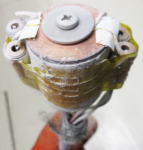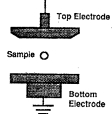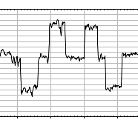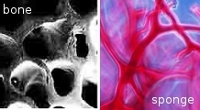
Open-source cryogenic temperature measurement:
Suppose you want to track of how cold your cryopump is getting (to know when it needs to be serviced) or you want to set up an undergraduate lab experiment involving high-temperature superconductors. These are just two of many scenarios where it’s useful to measure cryogenic temperatures but where you might not have the budget for commercial systems. As an alternative, one can assemble from only a handful of low-cost electronics an open-source, flexible, modular solution for the read-out, logging, and monitoring of, e.g., standard silicon cryo-diodes. (Detailed documentation coming soon!)

Amorphous metals:
Metallic glasses are metal alloys that have been cooled rapidly, so that the atoms end up in a “glassy” (rather than crystalline) state; this change in atom arrangement can result in significantly different material properties. The summer before I started graduate school, I had the privilege of working with Dr. Won-Kyu Rhim in the Johnson Group at Caltech, using an electrostatic levitator is used to study these properties. (illustration: Rhim et al.)

Diffusion and flow on surfactant spheres (i.e., soap film bubbles):
For the 2004 Reduced Gravity Student Flight Opportunities Program, my team and I designed and conducted microgravity fluid flow experiments (performed on NASA’s KC-135). In response to fluctuations in the microgravity environment (+/-.02g), dye would move around a bubble’s surface, sometimes encountering the wand. A variety of flow patterns were produced, all very different from the typical small-scale eddies and mixing that occur at the bottom of a 1g bubble.

Growth and characterization of magnetoresistive semiconductors:
Magnetoresistivity is the desirable ability to tune how much electricity a material conducts by putting it in a magnetic field (which you can then turn up and down). For my undergraduate thesis work with Prof. Benjamin Crooker, I worked on growing iron-doped indium-antimonide semiconductors that would have this feature, and on developing a technique to study samples’ magnetic properties using an existing polarized laser set-up (instead of having to send them to a SQUID magnetometer).

Amidine synthesis:
For my undergraduate chemistry research, I worked with Prof. James P. Kirby, synthesizing chemicals for the study of salt-bridge hydrogen bonds. Akin to a chemical Velcro, these bonds can, when the two sides stick together, cause an attached component to undergo a chemical excitation, producing a visible glow and making it a prime candidate for application as a chemical detector. (illustration: Kirby et al.)

Sponge growth and microscopy:
During my second summer internship with Dr. Greg Zimmerli at NASA Glenn Research Center at Lewis Field, I cultivated marine sponges (to be studied as analogues to bone cells), and prepared slides and researched fluorophores for a two-photon fluorescence, confocal microscope. (photos: bone, sponge)
